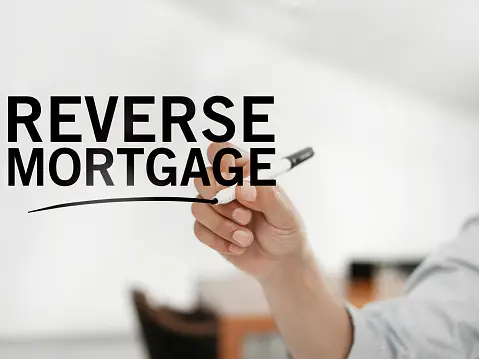Understanding how does a reverse mortgage work when you die is crucial for homeowners and their heirs. A reverse mortgage is a type of loan for homeowners aged 62 or older, allowing them to convert a part of their home equity into cash. This financial tool can provide a source of income during retirement but comes with specific implications upon the death of the borrower.
How Reverse Mortgages Typically Work
Reverse mortgages are financial instruments primarily designed for retirees who own their homes and seek additional income. In essence, a reverse mortgage allows homeowners to convert a portion of their home equity into cash without having to sell their home or incur monthly loan payments. Typically, the homeowner receives payments from the lender, either in a lump sum, fixed monthly payments, a line of credit, or a combination of these options.
The amount one can borrow depends on several factors including the borrower’s age, the home’s value, current interest rates, and the loan program chosen. Generally, the older the borrower and the higher the home value, the more one can borrow. Unlike traditional mortgages, reverse mortgage borrowers are not required to repay the loan until they move out of the home, sell it, or pass away. At that point, the loan, along with accrued interest and fees, must be repaid, usually from the sale proceeds of the home.
It’s important to note that while reverse mortgages offer financial flexibility, they also come with risks. For instance, interest compounds over time, potentially reducing the equity in the home. Additionally, borrowers must continue to pay property taxes, homeowners insurance, and maintenance costs to avoid defaulting on the loan. Therefore, before considering a reverse mortgage, individuals should thoroughly assess their financial situation and consult with a financial advisor to ensure it aligns with their long-term goals and needs.
How to Get a Reverse Mortgage
Getting a reverse mortgage involves several steps and considerations. Here’s a guide on how to navigate the process:
- Understand Eligibility Criteria: To qualify for a reverse mortgage, you typically must be at least 62 years old and own your home outright or have a significant amount of equity in it. Additionally, the home must be your primary residence.
- Research Lenders: Explore different lenders that offer reverse mortgages and compare their terms, interest rates, fees, and reputation. It’s essential to choose a reputable lender with a history of fair practices.
- Attend Counseling Session: Before applying for a reverse mortgage, you’re required to attend a counseling session with a HUD-approved counselor. This session helps you understand the implications of a reverse mortgage, including potential risks and alternatives.
- Determine Loan Type and Payment Structure: Decide on the type of reverse mortgage that best suits your needs. Options include Home Equity Conversion Mortgages (HECMs), which are insured by the Federal Housing Administration (FHA), or proprietary reverse mortgages offered by private lenders. Additionally, choose between receiving a lump sum, fixed monthly payments, a line of credit, or a combination of these options.
- Complete Application and Underwriting Process: Submit an application to the chosen lender. The lender will assess your financial situation, credit history, and the value of your home to determine the loan amount you qualify for. They may also require a home appraisal to verify the property’s value.
- Review Loan Terms: Once approved, carefully review the terms and conditions of the reverse mortgage, including interest rates, fees, and repayment obligations. Ensure you understand all aspects of the loan before signing any documents.
- Close the Loan: After reviewing and signing the necessary paperwork, the loan will close, and you’ll receive the funds according to the payment structure you selected.
- Continue Meeting Obligations: After obtaining a reverse mortgage, you must continue paying property taxes, homeowners insurance, and maintaining the property to avoid defaulting on the loan.
By following these steps and seeking guidance from financial professionals, you can navigate the process of obtaining a reverse mortgage effectively and make informed decisions about your financial future.
How Your Age Affects a Reverse Mortgage
Age is a central factor in the eligibility and functioning of a reverse mortgage. The minimum age to qualify for most reverse mortgages is 62, and the amount you can borrow increases with your age at the time of application. This setup means that older applicants can access more equity from their home compared to younger applicants. However, understanding how does a reverse mortgage work when you die reveals that the age factor also extends to the repayment obligations and the impact on heirs.
Understand If Your Spouse or Partner Is a Co-Borrower
When both you and your spouse or partner are co-borrowers on a reverse mortgage, the loan terms provide protections for the surviving partner upon your death. The key benefit here is that the surviving co-borrower can remain in the home without the obligation to immediately pay back the loan. Repayment is deferred until the last co-borrower either passes away, sells the home, or, in some cases, moves out for a period exceeding 12 consecutive months.
Understand If Your Spouse or Partner Isn’t a Co-Borrower
Situations become more complex when your spouse or partner isn’t a co-borrower. Traditionally, non-borrowing spouses were at a significant risk of losing their homes upon the borrower’s death. Recent changes in regulations now offer certain protections but understanding precisely how does a reverse mortgage work when you die remains essential for planning and preparedness.
Understand Eligible Non-Borrowing Spouses
The Department of Housing and Urban Development (HUD) has established guidelines for eligible non-borrowing spouses. This classification allows a surviving spouse to remain in the home under specific conditions, even if they were not a co-borrower. Key criteria include the spouse being marry to the borrower at the time of loan closing and remaining married until the borrower’s death. The eligible non-borrowing spouse must also establish legal residency in the home and comply with the original loan terms.
Understand Ineligible Non-Borrowing Spouses
In contrast, ineligible non-borrowing spouses do not qualify for the deferment of the loan repayment under the HUD’s protections. This situation often results in the need to repay the loan balance soon after the borrower’s death, which might involve selling the home to settle the debt. It underscores the importance of comprehensive estate planning and possibly exploring alternative financial solutions if this risk is a concern.
Conclusion
In grasitating how does a reverse mortgage work when you die, clear communication with your family and a solid understanding of the reverse mortgage conditions are paramount. Knowledge of your rights and obligations, along with an awareness of your spouse’s or partner’s status regarding the mortgage, will help ensure a more secure financial situation for the surviving members. This article highlights the need for homeowners to consider not just the immediate benefits of a reverse mortgage but also the long-term implications for their estate and loved ones.
FAQs
When considering a reverse mortgage, it’s crucial to understand how it works, especially concerning what happens upon the borrower’s death. Here are six frequently asked questions (FAQs) regarding how a reverse mortgage operates in this scenario:
What happens to the reverse mortgage when the borrower dies?
Upon the borrower’s death, the reverse mortgage becomes due and payable. This means that the borrower’s estate or heirs must repay the loan balance, typically by selling the home or using other assets.
Can heirs inherit the property with a reverse mortgage?
Yes, heirs can inherit the property even with an outstanding reverse mortgage. They have the option to repay the loan balance and keep the property or sell it to settle the debt.
What if the loan balance exceeds the property value when the borrower dies?
If the loan balance surpasses the property’s value, the lender cannot seek repayment beyond the home’s worth. The Federal Housing Administration (FHA) insurance protects both the borrower and their heirs from this scenario.
Are heirs responsible for the reverse mortgage debt?
Heirs are typically not personally liable for the reverse mortgage debt. They have the choice to repay the loan balance with the property’s sale or transfer ownership to the lender.
How much time do heirs have to repay the reverse mortgage after the borrower’s death?
Heirs usually have up to six months to repay the reverse mortgage after the borrower’s death. However, this timeframe may vary depending on the circumstances and agreements with the lender.
Can heirs keep the property if they cannot repay the reverse mortgage?
If heirs are unable to repay the reverse mortgage, they may need to sell the property to settle the debt. However, they can also explore options such as refinancing the loan or negotiating with the lender to keep the home.




